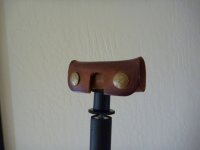Eyeglasses as an optimal interface device
If you have 20-20 vision, would you still get the same positive effect by using your binoculars with a pair of glasses in which the lenses haven't any prescription ? Does that make any sense ?
Bruce
Hi Bruce,
I believe so. It does make sense. The reason it might seem a bit odd is that we traditionally use eyeglasses either to improve vision, or to protect it (e.g., safety glasses, shooting glasses, sunglasses, etc.), but not to act as a preferred interface for visual instruments. Mostly, they are thought of as an annoyance to be dealt with in some way or another. Your question, however, provides a segway into a fundamental issue:
What is the optimal way to interface the human eye with binoculars for the purposes of birding? (I limit this to birding for the simple reason that military and astronomy uses place very different demands on the user, and, therefore, need to be addressed within their own frameworks.)
All binoculars have a fixed "eye point," which is located some distance away from the ocular. To obtain an optimal retinal image through the instrument the pupil should be placed at the same distance as the eye point, and parallel to eye lens. So much for optics design. There are no principles that address
how the pupil should be placed at the eye point! Nor are there design principles that address either the perceptual or behavioral aspects of "the view" that results from varied approaches.
Convention dictates that all binoculars are equipped with eyecups of some sort, e.g., hard phenolic, soft rubber, or extendable tubes. These all at least partially occlude side light, which many believe is necessarily beneficial. But for a variety of reasons this may not be completely true, as we are now slowly coming to discover that an unmagnified periphery added to the magnified center may have important benefits for psychological "immersion" and birding task performance.
Getting to the practical, one might deliberately buy non-prescription clear optical glasses to supplement birding, of course, but a relatively new technology provides the potential for reaching a higher level of human-system integration:
transition lenses. These little beauties darken in proportion to the ambient light and appear to do a very effective job optimizing the amount of light presented to the retina, — which fixed density sunglasses do not. To my experience they can be used effortlessly with binoculars, which I assume would also be true without a prescription. In other words, this technology may provide the ideal adaptive sunglass that seamlessly supports birding applications.
This discussion branches off into the area of sunglass effectiveness for vision, which I've been looking into on and off, but won't comment much about at this point. The evidence I have seen, though, supports the thesis that transition eyeglasses, fit to allow proper eye point placement, can definitely enhance the joys of birding. What I used to think of as a disadvantage having glasses turns out to be a bonus.
Maybe //LS has some professional thoughts on the subject.
Ed






